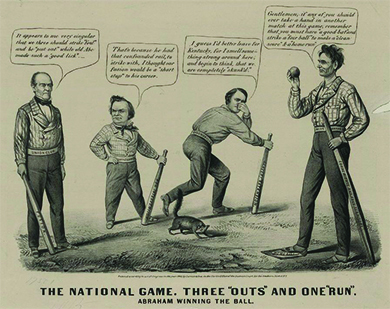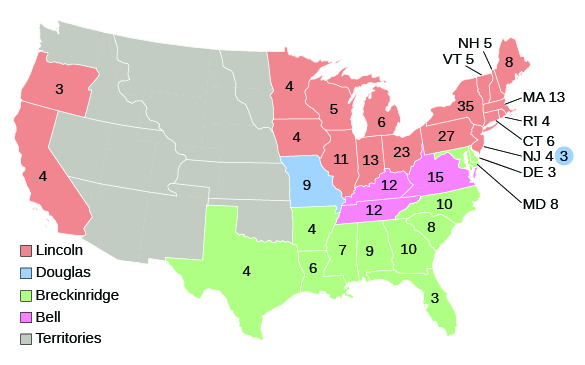| << Chapter < Page | Chapter >> Page > |
Visit the Avalon Project on Yale Law School’s website to read the impassioned speech that Henry David Thoreau delivered on October 30, 1859, arguing against the execution of John Brown. How does Thoreau characterize Brown? What does he ask of his fellow citizens?
John Brown’s raid on Harpers Ferry generated intense reactions in both the South and the North. Southerners grew especially apprehensive of the possibility of other violent plots. They viewed Brown as a terrorist bent on destroying their civilization, and support for secession grew. Their anxiety led several southern states to pass laws designed to prevent slave rebellions. It seemed that the worst fears of the South had come true: A hostile majority would stop at nothing to destroy slavery. Was it possible, one resident of Maryland asked, to “live under a government, a majority of whose subjects or citizens regard John Brown as a martyr and Christian hero?” Many antislavery northerners did in fact consider Brown a martyr to the cause, and those who viewed slavery as a sin saw easy comparisons between him and Jesus Christ.
The election of 1860 triggered the collapse of American democracy when the elevation of Abraham Lincoln to the presidency inspired secessionists in the South to withdraw their states from the Union.
Lincoln’s election owed much to the disarray in the Democratic Party. The Dred Scott decision and the Freeport Doctrine had opened up huge sectional divisions among Democrats. Though Brown did not intend it, his raid had furthered the split between northern and southern Democrats. Fire-Eaters vowed to prevent a northern Democrat, especially Illinois’s Stephen Douglas, from becoming their presidential candidate. These proslavery zealots insisted on a southern Democrat.
The Democratic nominating convention met in April 1860 in Charleston, South Carolina. However, it broke up after northern Democrats, who made up a majority of delegates, rejected Jefferson Davis’s efforts to protect slavery in the territories. These northern Democratic delegates knew that supporting Davis on this issue would be very unpopular among the people in their states. A second conference, held in Baltimore, further illustrated the divide within the Democratic Party. Northern Democrats nominated Stephen Douglas, while southern Democrats, who met separately, put forward Vice President John Breckinridge from Kentucky. The Democratic Party had fractured into two competing sectional factions.
By offering two candidates for president, the Democrats gave the Republicans an enormous advantage. Also hoping to prevent a Republican victory, pro-Unionists from the border states organized the Constitutional Union Party and put up a fourth candidate, John Bell, for president, who pledged to end slavery agitation and preserve the Union but never fully explained how he’d accomplish this objective. In a pro-Lincoln political cartoon of the time ( [link] ), the presidential election is presented as a baseball game. Lincoln stands on home plate. A skunk raises its tail at the other candidates. Holding his nose, southern Democrat John Breckinridge holds a bat labeled “Slavery Extension” and declares “I guess I’d better leave for Kentucky, for I smell something strong around here, and begin to think, that we are completely skunk’d.”

The Republicans nominated Lincoln, and in the November election, he garnered a mere 40 percent of the popular vote, though he won every northern state except New Jersey. (Lincoln’s name was blocked from even appearing on many southern states’ ballots by southern Democrats.) More importantly, Lincoln did gain a majority in the Electoral College ( [link] ). The Fire-Eaters, however, refused to accept the results. With South Carolina leading the way, Fire-Eaters in southern states began to withdraw formally from the United States in 1860. South Carolinian Mary Boykin Chesnut wrote in her diary about the reaction to the Lincoln’s election. “Now that the black radical Republicans have the power,” she wrote, “I suppose they will Brown us all.” Her statement revealed many southerners’ fear that with Lincoln as President, the South could expect more mayhem like the John Brown raid.

A new level of animosity and distrust emerged in 1859 in the aftermath of John Brown’s raid. The South exploded in rage at the northern celebration of Brown as a heroic freedom fighter. Fire-Eaters called openly for disunion. Poisoned relations split the Democrats into northern and southern factions, a boon to the Republican candidate Lincoln. His election triggered the downfall of the American experiment with democracy as southern states began to leave the Union.

Notification Switch
Would you like to follow the 'U.s. history' conversation and receive update notifications?